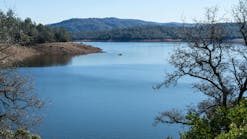A new type of analysis suggests that recent droughts in Ohio were more severe than standard measurements have suggested, according to a press release from Ohio State University.
Researchers at The Ohio State University developed impacts-based thresholds for drought in Ohio, looking specifically at how corn yield and streamflow were affected by various drought indicators, such as notable changes in soil moisture, crops, and even livestock losses in the state.
The results suggest this impacts-based approach could give earlier and more accurate notice when drought conditions are approaching, said Steven Quiring, co-author of the study and a professor of geography at Ohio State.
“We want to better understand what steps should be taken so that Ohio can better prepare for and also monitor the onset of drought conditions because a lot of the best ways to respond to drought is taking action early,” said Quiring.
Moreover, with a more precise early warning system, agriculture producers might be able to save time and money by implementing water restrictions, or by switching to different or more drought-resistant crops.
The study was published in the Journal of Hydrometeorology.
The Ohio State researchers compared how their method performed at predicting droughts with data from the U.S Drought Monitor (USDM).
The problem with the USDM is that it uses fixed drought thresholds, or guidelines that use the same parameters to measure changes in all seasons and climate regions of the country. Unfortunately, this one-size-fits-all approach can cause monitoring plans to inaccurately gauge local weather conditions and how they impact those in certain communities, Quiring said.
By analyzing data from four drought indices commonly used in previous studies to monitor drought intensity across the United States, researchers were able to show that fixed thresholds tend to indicate milder drought conditions in Ohio than are indicated by the impacts-based thresholds identified in their study.
It’s why Quiring and his team want to use the impacts-based method to revamp those thresholds to better reflect drought conditions in Ohio, a move that starts by updating The Ohio Emergency Management Agency’s state drought plan.
To accomplish their goal, the researchers investigated how data from the four indices impacted streamflow, or how much water discharges over a designated point in a fixed period of time, and Ohio’s total corn yield, mainly because the crop covers an extensive area within the state, and nearly every county grows it.
Identifying agricultural drought thresholds that are specific to Ohio is important, said Quiring. Because the impacts of drought can vary from region to region, using the same drought thresholds in California as in Ohio is absurd, he said. Additionally, the types of drought that occur can differ. Ohio, for example, in particular is prone to “flash droughts” — shortages caused by warm weather that can happen quickly over a few days or weeks.
“These rapid-onset droughts can be particularly challenging for the agricultural community because they arrive quickly and conditions can rapidly go from normal to drier than normal,” said Quiring. “All of a sudden soil moisture is depleted, the crops are stressed and yield losses and impacts on the ecosystem occur.”
The last time severe drought caused major losses in the United States was in 2012 when a record-breaking heat wave resulted in $34.2 billion in economic losses, 123 direct deaths and a 26% decrease in total corn crop yield across the country.
What’s more, the researchers’ impacts-based method of drought monitoring also takes into account how climate change can worsen flash drought events.
“One of the impacts that we found to be counterintuitive in Ohio is that with climate change, we do expect more rainfall overall, but we also expect to see more droughts because there are longer periods of time where no rain occurs,” said Quiring.
The results of this study suggest that following guidelines that aren’t specific to a region’s issues can end up either systematically underestimating the impacts of severe drought conditions in some locations or overestimating them in others, Quiring said.



